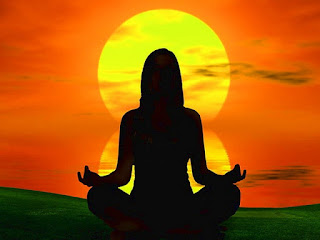Are you bit confused between and yoga styles and have no idea what is the right form for you?
This often happens with any beginner, so first of all, you need to understand
that yoga comprises of many disciplines that concentrates on healing the body
and mind. It simply enhances the yoga practitioner physically, emotionally, and
spiritually. There are many forms of yoga that are being practised by the yoga
experts, however, for any beginner, it is quite difficult to figure out what
will be the right yoga form. When checking out yoga studios online or looking
at a yoga class schedule, it is not easy for a yoga novice to figure out the
right style of yoga, since everything is new to him.
Since there are many yoga styles, many of yoga
beginners get confused with many different yoga styles. Hatha yoga and ashtanga
yoga are two yoga styles that most of the beginners get wrong as they both are
one in the same style, yet both styles mean different from each other in an
actual yoga practice. Here is a brief explanation on how both yoga forms, Hatha
yoga and Ashtanga Yoga, are different from each other.
Intensity of yoga style
Hatha Yoga, literally means willful
or forceful yoga. It refers to a set of (postures), and sequences of that
are designed to align your muscles and bones. Hatha Yoga is a general term that
includes all styles of yoga, which includes the practice of (postures) and (breathing practice) that
brings a yoga practitioner peace of mind and prepares the body for meditation.
Hatha yoga is typically a slow, gentle, right style of yoga for the beginners
who prefer to have more relaxed poses to hold for longer.
Whereas, Ashtanga word comes from word which translates
“eight-limbed. Ashta (eight) and anga (limb), which revolves around the idea of
taking a practitioner through eight steps of yoga to get a path for
purification and self-realisation. These eight posture includes Yama (moral
codes), Niyama (self-purification), Asanas (postures), Dharana (concentration),
Dhyana (meditation), Pranayama (breathing exercise), Samadhi (equilibrium) and
Pratyahara (withdrawing sensory perceptions) that are performed for internal
cleansing and they are quite difficult for beginners to perform all eight yoga
styles of Ashtanga.
Flow
The most common difference between
Hatha and Ashtanga yoga is (flow). Vinyasa is a sanskrit word, which translates to “breath-synchronized
movement” and when it comes to moving from posture to posture without a halt,
Ashtanga yoga is one yoga style that goes into postures, whereas Hatha yoga
goes into a posture, holds it and simply comes out of posture, so there is no
transition between postures as in Ashtanga practice.
Key purpose of Ashtanga yoga
Ashtanga yoga is practiced strictly
works on eight limbs, which helps in internal cleaning and improves blood
circulation which leads to a healthy and calm mind. As mentioned above, the
eight limbs are performed to improve overall health and provide flexibility to
the yoga practitioner. Apart from all these, ashtanga yoga also builds stamina,
which is highly ignored in other forms of yoga.
Key purpose of Hatha yoga
Hatha yoga is practiced solely
concentrating on perfecting the and in order to boost the flow
of (breath) through the If briefly explained, are channels all over the body
through which the prana flows. is the pure act of controlling and directing the breath of yoga practitioner
through breathing exercises. This way, hatha yoga increases the flow of energy,
although, asanas and pranayams are also part of Ashtanga yoga, yet they are
just two of eight limbs.
Conclusion
This blog will clear the cloud of doubt and you would be able
to see the right way of yoga that will be beneficial to you. Before, you start
on with any yoga style, it is really important to approach Ashtanga yoga
teacher training in Goa, that will help you in doing your yoga forms
for beginners in right way.

Comments
Post a Comment